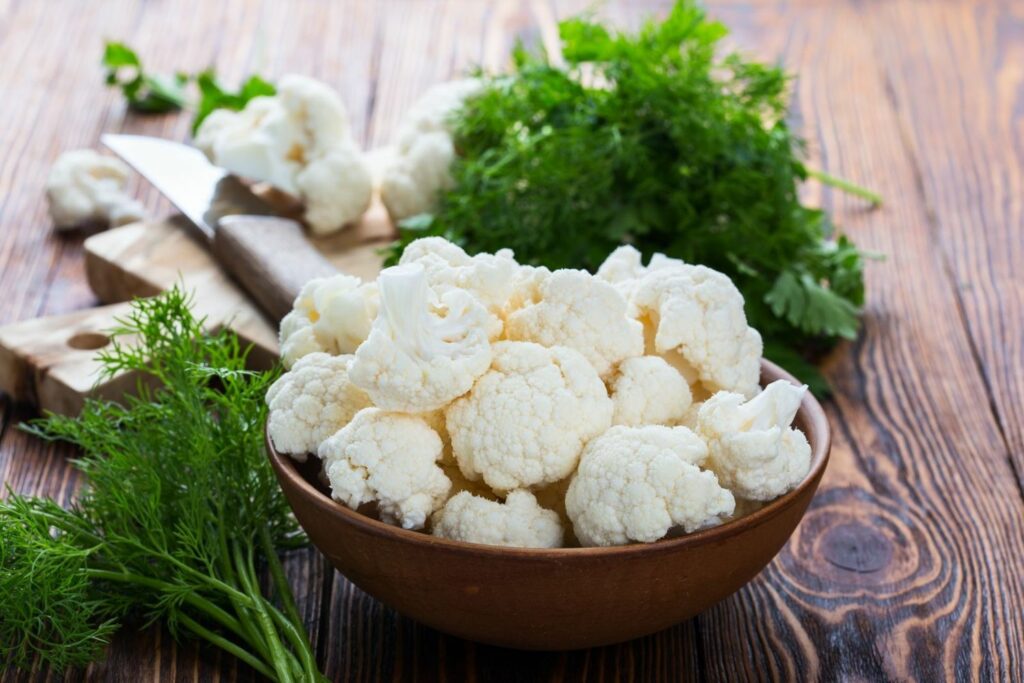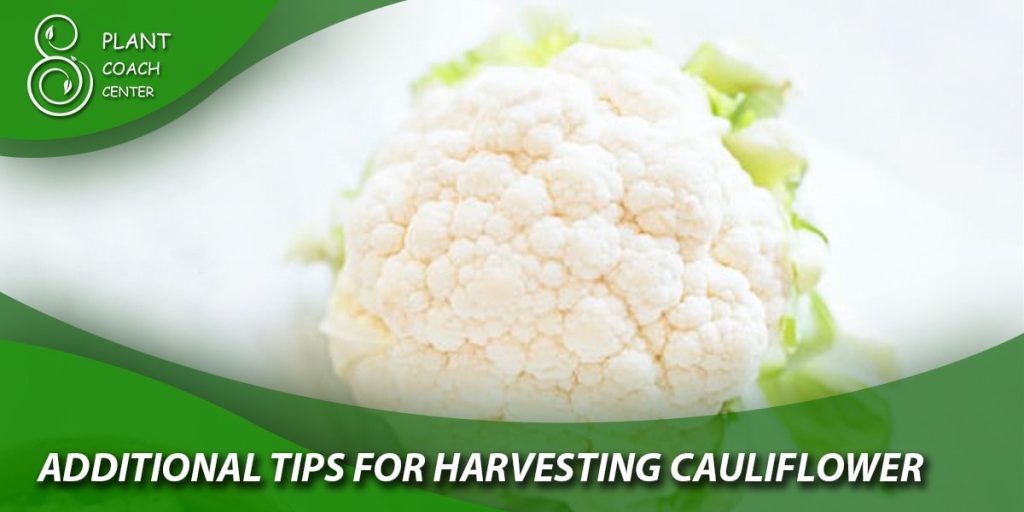Cauliflower is a cool weather crop that requires precisely timed planting and harvesting for optimal flavor and texture. Learning to identify the perfect harvest window is key to getting tender, sweet cauliflower heads before it’s too late. While harvested too early, the curds will be small and underdeveloped. But waiting too long leads to overmature, bitter, and grainy florets. Use these visual cues to determine if your cauliflower has passed its prime harvesting time.
Signs Your Cauliflower is Past its Prime
Cauliflower heads reach maturity and peak flavor within a fairly small harvesting window. Heads left in the garden too long undergo physical and chemical changes making them inedible. Here are signs your cauliflower is overripe:
-
Loose, Rice-like Texture – Florets begin separating and develop a grainy, rice-like texture when overmature.
-
Yellow Color – The creamy white curds start yellowing as chlorophyll accumulates from sun exposure,
-
Bitter Taste – Overripe cauliflower takes on a distinctly bitter flavor from glucosinolates breaking down.
-
Flower Development – Tiny flower buds emerge from the curd and open into yellow flowers,
-
Spreading Curd – The head stops compacting and branches start elongating, causing it to loosen and spread out.
-
Pests and Decay – Insects, fungi, and bacteria infiltrate and decompose the aging vegetable.
Timeline of Cauliflower Maturation
Knowing the timeline of cauliflower growth stages helps identify when it’s going too far past maturity:
-
3-5 days after head initiation – Curd reaches size of an egg
-
7-12 days after head initiation – Curd doubles in size, 2-4 inches diameter
-
2-3 weeks after head initiation – Curd reaches maturity, 6-8 inches diameter
-
1 week after maturity – Curd spreads, rice-like texture develops
-
2+ weeks after maturity – Severe bitterness, flowering initiates
Ideal Harvesting Time
Cauliflower is ready for harvest approximately 2-3 weeks after the central head, or curd, begins developing. Use these cues to identify prime harvesting time:
-
Head is 6-8 inches in diameter
-
Curd is dense, compact, and creamy white
-
Florets are tender and free of grainy texture
-
No separation or rice-like appearance
-
Before any yellowing occurs
-
Before flower buds emerge through curd
Harvesting Too Early
Harvesting cauliflower prematurely leads to disappointment when cutting into undersized, underdeveloped curds. Signs you’ve jumped the gun include:
-
Curd less than 3 inches diameter
-
Thin, loose curd structure
-
Crunchy, tough texture
-
Lack of dense florets
-
Minimal cauliflower flavor
Letting it Go Too Long
While harvesting late is better than early, waiting too long means settling for inferior quality. Watch for these signs you’ve exceeded the prime window:
-
Curd exceeds 8 inches diameter
-
Florets beginning to separate from head
-
Any visible yellowing of curd
-
Hint of bitterness in raw taste
-
Rice-like or grainy texture
-
Flower buds starting to emerge
Tips for Harvesting at Peak Maturity
Follow these tips for harvesting perfectly mature cauliflower:
-
Note calendar days from transplanting to estimate maturity timing
-
Inspect plants frequently as heads mature
-
Monitor head size – harvest at 6-8 inch diameter
-
Check curd compactness and color
-
Sample raw floret to test tenderness and sweetness
-
Cut stem just below curd before extensive flowering
-
Time plantings for sequential harvests
-
Blanch curds when size of tennis ball to prevent premature yellowing
Storing After the Harvest
Cauliflower heads will only last 7-10 days in the refrigerator. Consider these storage options:
-
Freeze for long-term storage. Blanch first for maximum quality.
-
Pickling preserves cauliflower for several months. Works best with small florets.
-
Dehydrate excess harvests into chips or add to soups and stews later.
-
Canning cauliflower allows enjoyment for a year or longer. Requires pressure canning equipment.
-
Store pickled, frozen, canned, or dehydrated cauliflower properly to enjoy long after the harvest ends.
Enjoy Peak Flavor
Timing is everything when harvesting cauliflower. Aim to cut curds at maturity to capture maximum sweetness and minimize bitterness. Avoid disappointment by learning to accurately identify when cauliflower goes past its prime. With careful planting schedules and attentive harvesting, you can enjoy tender, creamy cauliflower for months after the growing season ends.
How to preserve cauliflower
The tasty cauliflower florets can be preserved for a long time using a few different methods. Here is our guide to preserving cauliflower.
One of the best ways to preserve cauliflower is to freeze it. Cauliflower is a great source of vitamins, which makes it different from other brassicas like kale (Brassica oleracea var. sabellica), because it can be frozen raw without blanching. Before you freeze cauliflower, separate the florets from the head, wash them, and let them drain in a colander. Then portion the washed cauliflower and put it in the freezer. If you don’t have much time to cook, you can add the cauliflower without first letting it become soft.

To make cauliflower easier to digest and to extend its shelf life, it is often blanched. This is also the first step to boiling or pickling the florets. Cut up cauliflower florets and boil them in salty water for a few minutes, until they are just al dente. A strong amount of citric acid added to the water will help keep the cauliflower’s white color. Then drain the florets and rinse with cool water.
To preserve five heads of cauliflower in jars, place the florets into the jars. Pour over two litres of boiling salted water until the cauliflower is covered. Screw the lids loosely onto the jars, as air must be able to escape during the boiling process. Boil the jars at 100 °C for at least 20 minutes. This can be done in the oven in a high casserole dish that has been filled with water. Alternatively, you can place the jars in a large saucepan of water on a hob. After boiling, screw the lids on tightly and turn the jars upside down and leave to cool.
Like almost any vegetable, cauliflower can be preserved by fermenting it. To do this, cut the raw cauliflower into florets and wash them. Then, mix 20 to 40 grams of pure salt with one liter of water to make a brine that is 2% to 4% salt. Then, pack the cauliflower florets into the jar so that there is only 3 to 4 cm of space below the lid. Place a fermentation weight on top of the cauliflower and finally pour in the brine. The fermentation weight should be completely covered with brine. Put a tight lid on the jar and leave it somewhere at room temperature for five to seven days. This starts the fermentation process.
The cauliflower is ready to eat after two to three more weeks of slow fermentation in the fridge or a cool cellar. It will keep for several months – especially if the rim of the jar is kept clean.

If you want to eat cauliflower, you can boil, steam, bread or batter it, put it in soup, bake it in the oven, or even eat it raw. Unlike growing, which we cover in more detail in our article planting cauliflower, cooking cauliflower is much simpler.
Not only the flower but also the leaves of the cauliflower can be eaten. The older, outer leaves aren’t as tasty, but the younger ones taste great in a creamy soup or stir fry.
Storing and preserving cauliflower
You have to store the tasty white florets the right way if you want to eat them when cauliflower isn’t in season. This delicate vegetable can be hard to store, so here are our best tips to help you enjoy cauliflower for as long as possible after the harvest.

When to Harvest Cauliflower
FAQ
How do I know when my cauliflower is ready to pick?
How long can cauliflower stay on the plant?
Can you get cauliflower all year round?
Do cauliflower plants keep producing?
What happens if you harvest cauliflower too early?
Harvest too early, and you may get less than your efforts deserve, harvest too late, and your crop may be ruined. The size of the cauliflower head is a key indicator of its maturity. Depending on the variety, a mature head will generally be 6-8 inches (15-20 cm) in diameter.
How do you know when a cauliflower is ready to harvest?
When the cauliflower head is between six and eight inches wide and is compact, firm, and white, depending on the type, it’s ready for harvesting. Harvest the veggie when it reaches its full color, and avoid waiting to remove the head when the cauliflower spreads out. Use a knife to chop the cauliflower head at the base of the plant.
When to harvest cauliflower?
It’s a good idea to keep an eye on it to determine when to harvest cauliflower and avoid its becoming too mature, which results in grainy cauliflower. You’ll want to pick the cauliflower once the head is full but before it has begun to separate, usually at about 6 to 12 inches (15-31 cm.) in diameter is when to cut cauliflower.
When should cauliflower be cut?
You’ll want to pick the cauliflower once the head is full but before it has begun to separate, usually at about 6 to 12 inches (15-31 cm.) in diameter is when to cut cauliflower. The mature head should be firm, compact, and white.

